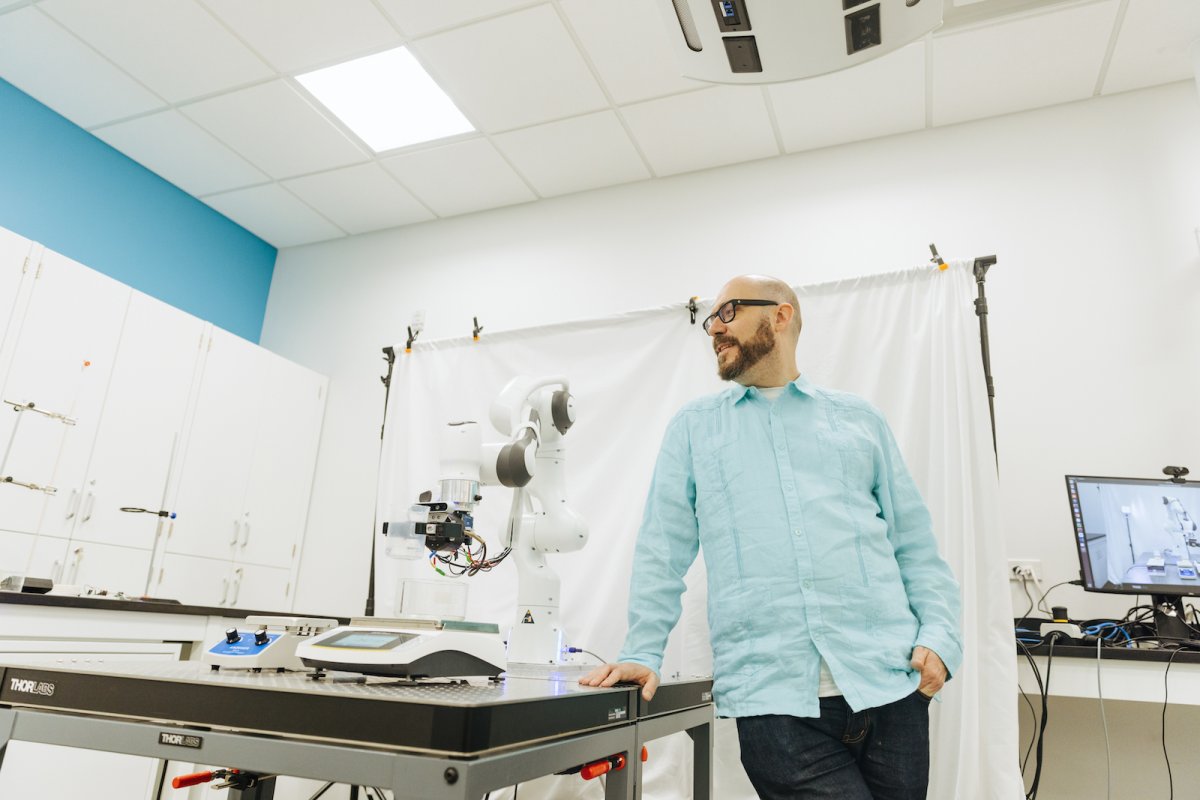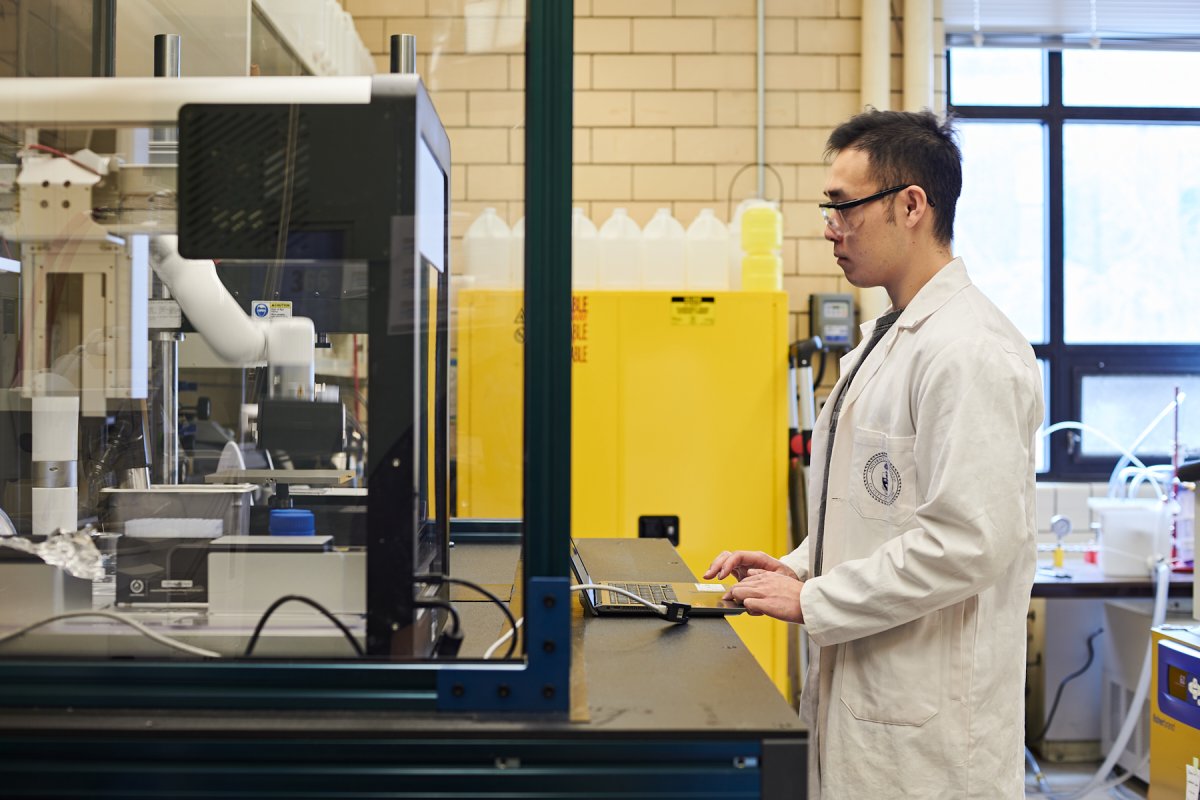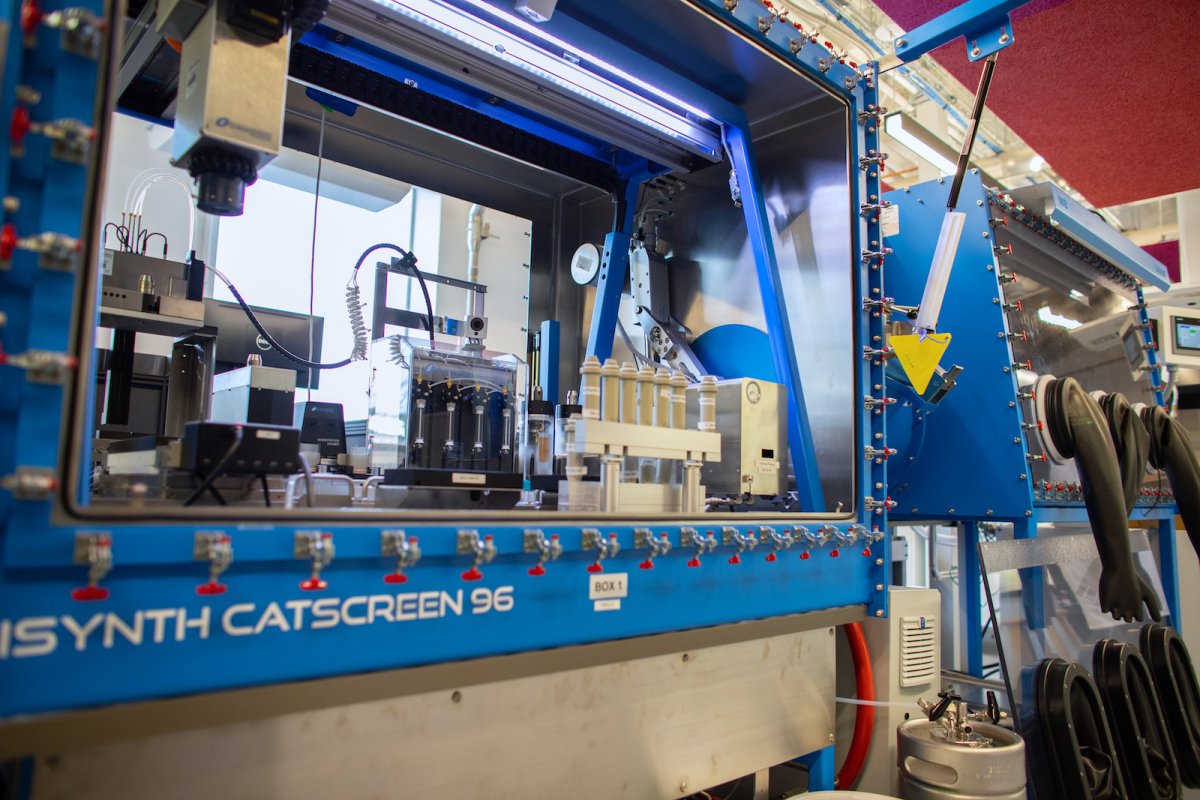A “self-driving lab” that’s using artificial intelligence (AI) to reverse engineer how to make things like new medicines, sustainable plastic alternatives and anti-corrosive building materials has received a record-breaking $199.5-million research grant through the Canada First Research Excellence Fund.

The Acceleration Consortium, based out of the University of Toronto, will use the grant to continue its research designing new materials with AI and synthesizing them in-house with autonomous robots — a process that speeds up scientific discovery by decades, the Consortium says.
Minister of Innovation, Science and Industry François-Philippe Champagne announced the funding, the largest single federal research grant ever awarded to a Canadian university, on Friday with Alán Aspuru-Guzik, the director of the Acceleration Consortium, in attendance.
Eleven other large-scale research projects were chosen to receive funds this year, including initiatives to treat and prevent brain and heart disease and develop responsible AI, but the Acceleration Consortium’s grant was the largest by a margin of $34 million. In total, $1.4 billion in research funds were awarded on Friday.
“Our goal is to accelerate science,” Aspuru-Guzik said. “We’ve essentially supercharged the process of scientific discovery.”
The Acceleration Consortium contends that virtually all major advancements in human history have been driven by the discovery of new materials and molecules, “from the Stone Age to the Bronze Age, to the semiconductors that propelled the Information Age.”
But the invention of new materials is an exceedingly slow process. There are billions upon trillions of ways to combine atoms into new structures.
“Chemical space is practically infinite. There are more molecules that you could make, or materials, than atoms in the visible universe,” Aspuru-Guzik says.
For years, scientists have stumbled upon discoveries, like penicillin for instance, which was discovered when Alexander Fleming returned to his lab from vacation to find an interesting mould growing on his petri dish. But imagine if scientists didn’t need to operate in the dark.
That’s where AI and automation step in to accelerate the timeline of discovery. With the Consortium’s self-driving labs conducting experiments, scientists can “reduce the time and cost of bringing materials to market, from (around) 20 years and $100 million to as little as one year and $1 million,” the organization writes.
And these new molecules can be deployed to help any number of problems: cancer, pollution, construction or anything the scientists dream up.
How the self-driving labs work
The Acceleration Consortium’s self-driving labs work on a cycle in which humans guide the process, but the ultimate drivers are the machines.
The scientists begin by narrowing down what kinds of properties they’re looking for in a new material — for instance, a conductive, lightweight material that can be used for wearable sensors or a polymer that breaks down easily in the environment as a plastic alternative. After the scientists set the parameters and objectives of what they’re looking for, the AI comes up with a number of potential options, then scores those options based on the initial guidance from scientists.
Once the best candidates are selected, the AI directs robots in the lab to synthesize the material, which is no small feat as there’s no recipe book for cooking up novel materials. How to synthesize new molecules is still an open question.
Aspuru-Guzik says that his research group is pioneering an approach whereby the AI analyzes a large body of synthesis data and suggests a potential “recipe” to follow for cooking up the new material, constrained by what is possible for the robots to perform.
After the robots have created the material, they also carry out autonomous testing to evaluate which material candidate best displayed the properties the scientists were looking for at the start.
All that data is then fed back into the AI, so it can learn which candidate performed the best and suggest newer, better candidates. This iterative cycle continues until a viable new material is found.
What is the Acceleration Consortium producing?
Ahead of the funding announcement on Friday, Aspuru-Guzik sat down with Global News to discuss how the Acceleration Consortium will use the grant to solve humanity’s problems.
He said the organization will take the $199.5-million investment and use it to develop seven updated versions of self-driving labs to work on new medicines, green technology, building materials and electronics.
“From inorganic chemistry, all the way to biology, and passing by drug discovery formulation,” he said.
In a study published January, the Acceleration Consortium revealed that it was able to develop a potential drug for treating liver cancer in just 30 days, a process that usually takes decades. But that’s just the tip of the iceberg.
In Aspuru-Guzik’s own lab, he’s working to create a next-generation laser made of organic materials that could one day power something akin to Google Glass, augmented reality goggles. Imagine scrolling through your text messages by just wearing a pair of glasses that show you everything you need.
“When we think about these technologies, there are uses that you would never imagine,” says Aspuru-Guzik, adding that organic lasers could also be used in hospital settings as a sticker that monitors blood and oxygen levels.
“That is at the edge of imagination right now.”
One of Aspuru-Guzik’s colleagues, Jason Hattrick-Simpers, is developing alloys that are resistant to corrosion.
“Sounds kind of boring, you know? Well, up to four per cent of the world economy is linked to corrosion,” Aspuru-Guzik contends. “Think about how many times you have to repaint bridges, you have to coat boats. … All of that can be solved by having better anti-corrosion materials.“
Another of Aspuru-Guzik’s colleagues, Milica Radisic, is working on creating a novel way to test drugs, called organ in a chip. This innovation is a compact way to model how a drug will affect a certain organ, especially if the organ is riddled with a disease like cancer.
An organ in a chip can simulate that diseased environment and then drugs can be channelled through it to observe how it will interact with human tissue.
One last exciting application is that of carbon capture and pollution control, and how humans can reclaim the copious amounts of CO2 we have released into the atmosphere to reverse climate change.
“What will be the best materials to take that CO2 out of the atmosphere, catalyze it and convert it into a useful polymer of fuel using the least amount of energy?” Aspuru-Guzik pondered.
Well, that’s exactly what colleague David Sinton is looking into, he says.
“Each one of our faculty members, we select them and we work with them because they are working at the frontiers of some of the hardest problems that humanity is facing.”
The Consortium doesn’t just work with a network of researchers across the country, but also taps industry stakeholders to bring its novel inventions to market.
By the end of the seven-year project through the Canada First Excellence Fund, Aspuru-Guzik hopes the Consortium will attract $10 million of industry support per year.
“Because we want to help them solve problems and also find fundamental answers that they care about for the long term of their own business.”
The Canada First Research Excellence Fund was created in 2014 and invests hundreds of millions of dollars into important research efforts, chosen every seven years, though a highly-competitive, peer-reviewed process.







Comments